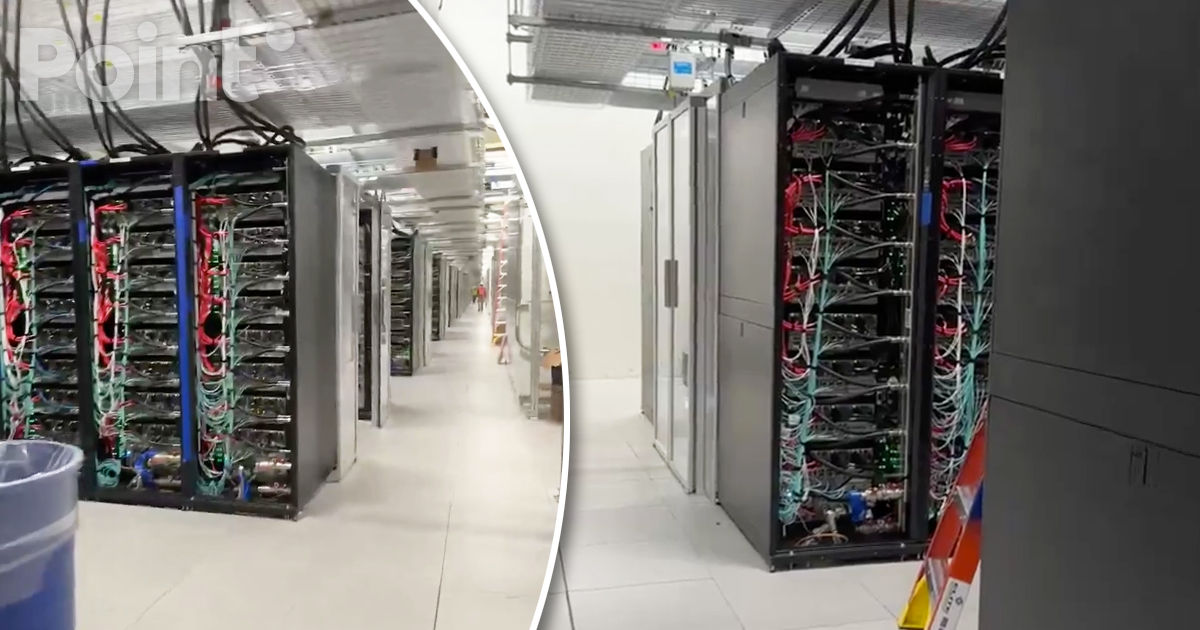
Tesla Cortex marks a bold step forward in autonomous driving. Tesla built a new AI supercluster at its Giga Texas plant. This facility now houses 50,000 high-performance Nvidia GPUs. Tesla designed Cortex to train its Full Self-Driving (FSD) system and other AI applications. Moreover, the supercluster lays the groundwork for a safer, smarter driving future.
The Birth of Tesla Cortex
Tesla has always pushed AI innovation. Earlier projects like Dojo paved the way for Cortex. CEO Elon Musk recently explained that Tesla will build a supercomputing platform to solve real-world AI challenges. Tesla constructed Cortex to serve as a dedicated engine for FSD training and future products.
At Giga Texas, Tesla quickly assembled a facility that will eventually run 70,000 AI servers. In its first phase, the plant deploys 50,000 Nvidia H100 GPUs. Later, Tesla will add 20,000 of its own custom hardware. Although the initial video shows only about 2,000 GPU servers, these represent a small fraction of the full build. Nevertheless, this launch sets a strong foundation for future growth.
Unleashing AI Power Inside Cortex
Tesla engineers filled the halls of Giga Texas with neatly arranged server racks. They placed GPUs in rows that optimize space and cooling. In one video, Elon Musk showed 2,000 GPU servers working together. These servers process massive data streams from Tesla vehicles and transform raw video into insights.
Furthermore, the facility needs immense power and cooling. At launch, Cortex consumes 130 megawatts. Tesla plans to boost this capacity to 500 megawatts by 2026. In addition, Tesla uses advanced liquid-cooling systems from Supermicro and towering fan stacks. These systems keep the GPUs cool during intense AI training sessions. Consequently, the GPUs maintain their performance and stability.
Nvidia’s H100 GPUs power Cortex. They feature dedicated tensor cores that accelerate deep learning tasks. As a result, Tesla Cortex can simulate millions of driving scenarios and train neural networks faster than ever before.
Boosting Full Self-Driving Capabilities
Tesla Cortex primarily accelerates FSD training. Autonomous driving needs rapid processing of vast amounts of sensor and video data. With 50,000 Nvidia GPUs working in parallel, Tesla Cortex trains deep neural networks at record speed. This speed allows Tesla to iterate quickly and improve safety.
Moreover, Cortex supports the development of Tesla’s “Cybertaxi” service. Autonomous ride-hailing depends on flawless FSD performance. In addition, Cortex helps train AI for Tesla’s Optimus robot. This autonomous humanoid robot, set for limited production in 2025, will assist in manufacturing processes.
Tesla continuously gathers data from over 4 million vehicles. Every mile adds to a growing repository that Cortex uses to refine FSD algorithms. Consequently, Tesla can update its software more frequently and improve its systems over time.
Engineering Marvel: GPU Deployment and Infrastructure
Tesla engineers achieved the challenging deployment of 50,000 Nvidia GPUs. They designed Cortex with modular server racks that house multiple GPUs per rack. For example, each row contains 16 racks, and each rack holds 8 servers. Although the initial setup shows a small fraction of the total plan, it clearly demonstrates Tesla’s ambition.
Each GPU processes high-resolution sensor data and runs complex deep learning algorithms. Moreover, Tesla optimized the architecture to support high-bandwidth interconnects and low-latency communication. As a result, data flows smoothly across the cluster, ensuring rapid training of AI models.
Tesla also planned Cortex with energy efficiency in mind. Despite its large power needs, the facility uses energy-efficient cooling and power management systems. This balance of performance and sustainability aligns with Tesla’s broader mission to promote sustainable energy.
Broader Impacts and Future Innovations
Tesla Cortex is not merely a supercomputer. It acts as the cornerstone of Tesla’s AI ecosystem. With Cortex, Tesla can quickly scale its autonomous systems and roll out improvements to its vehicle fleet.
In addition, Cortex extends its capabilities to energy management, predictive maintenance, and next-generation robotics. As Tesla refines its AI models, the lessons learned in Cortex will influence product innovation across the board.
Industry experts praise Tesla Cortex for its scale and engineering sophistication. They note that Cortex sets Tesla apart from many competitors. Furthermore, the reliance on Nvidia’s H100 GPUs gives Tesla a clear technological edge. This advantage may help Tesla shorten the time needed for over-the-air updates and enhance vehicle safety.
Moreover, Cortex reinforces Tesla’s transition from an electric vehicle maker to a full-fledged technology and robotics company. As Tesla accelerates its FSD training, the industry watches closely for new breakthroughs that may reshape the market.
Industry Perspectives and Competitive Edge
Analysts view Tesla Cortex as a game-changer. They point out that Cortex’s scale and speed give Tesla an edge over many rivals. In addition, the active use of Nvidia’s cutting-edge H100 GPUs distinguishes Cortex from conventional data centers.
Experts from Tom’s Hardware highlighted Cortex as a major technological leap. They compared Cortex favorably with other AI supercomputers and praised its ability to handle intensive deep learning tasks. Consequently, Tesla Cortex could redefine market dynamics in both the automotive and tech sectors.
Tesla’s bold move with Cortex also sends a strong signal to investors. It underscores Tesla’s commitment to lead in AI research and autonomous driving technology. As competitors struggle to catch up, Tesla Cortex provides a robust platform that may accelerate the evolution of safe, autonomous vehicles.
A New Era for Tesla AI
Tesla Cortex heralds a new era in autonomous driving. With 50,000 Nvidia GPUs powering this state-of-the-art supercomputer at Giga Texas, Tesla sets new benchmarks for FSD training and AI innovation. The supercluster not only speeds up FSD development but also lays the foundation for advancements in robotics, energy management, and sustainability.
Tesla Cortex proves that bold innovation is possible when engineers push the limits. As Cortex ramps up its capabilities, Tesla will lead the way toward safer, smarter, and more efficient vehicles. The journey is just beginning, and the future looks both challenging and exciting.

